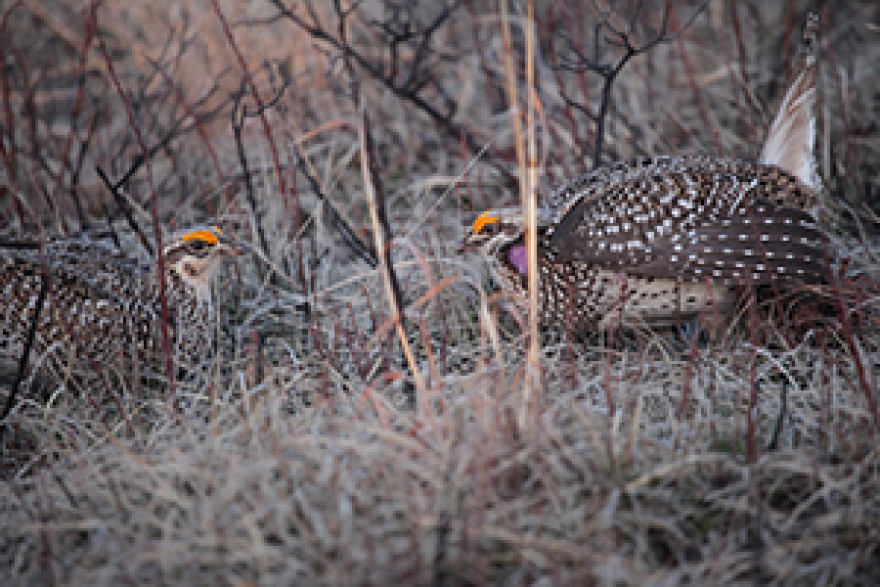Fire crackles through the dry brush at Riley Lake Wildlife Management Area in Price County.
Men in bright yellow shirts and forest green pants carrying red drip torches to light the fire make their way through the knee-high brush.
The brown grass quickly blackens as the fire sweeps across the open field on the windy day in the Chequamegon Nicolet National Forest.
Just the weather needed for a prescribed burn.
“Our main is to make is to keep this into a prairie edge type habitat,” said Ken Pemble, a wildlife biologist with the Chequamegon Nicolet National Forest.

Maintaining the habitat is key to protecting a species of concern in Wisconsin: the sharp-tailed grouse.
The population has steadily declined over the years.
“This area in particular we tie together upland habitat for mating and nesting with lowland open bog habitat where the sharp tailed grouse will also use a lot of food sources such as cranberries and the open bog. As we tie this together it gives them enough room mate and live,” said Pemble.
He said there are also about seven active leks in the area.
“Leks are their dancing grounds where the males do their displays. From that, our count has gone down to about 20 birds that know of. It’s really hard to survey this,” said Pemble.
The Forest Service estimated there about 80 of the birds on the property now. A far cry from the 1,000-plus Aldo Leopold once counted in the area.
With only five such suitable habitats for species in the state, Pemble said it’s important to do everything they can to maintain the environment to protect the species.
Every year the Forest Service burns different sections of the Riley Lake Wildlife Management Area, hitting each one about every four years.

Last week’s burn was roughly 500 acres.
“We try to have slow, high heat and high intensity fire take out the woody vegetations. We’ll cook the cambiums of the target species and we’ll get a really good response,” said Pemble. “Everything that’s been on the ground will be consumed and we’ll actually get a response from a lot of wildflowers and blueberries.”
And hopefully maintain a healthy habitat for the declining sharp tailed grouse population.
“It’s not easy and things are stacked against us, but everything we’re doing is to keep a native species on the landscape,” said Pemble.



















